|
Getting your Trinity Audio player ready...
|
VIDEO. A natural solution to beach erosion. Midcoast Community Council continues to negotiate the reconstruction of the Medio/Miramar Bridge. The San Mateo County plans call for armoring. The California Coastal Commission’s sea-level rise policy most recently has been retreat, rather than armoring.
“Recognizing the negative effects of seawalls, the Commission has recently been adding a “no future seawall” provision to many permits for coastal development, which requires the property owner to waive future rights to any future shoreline protection.”
~ Explore Beaches UCSB
Might Sandsavers save our Coastside beaches?
From the Sandsaver Website
How Sandsaver Works
The Sandsaver operates in 2 manners; First by breaking down the energy of the wave, therefore drastically reducing the erosion on the beach. Secondly, it enables the wave, which consists of large amounts of sand and beach sediment, to go through the tapered openings and onto the beach area. When the water retreats, it must pass through the smaller tapered open portion of the module enabling the sand sufficient time to settle into the coastline and not back into the surf, therefore buidling beach. Eventually, the modules will become completely immersed in sand and beach sediment, accreting large amounts of sand on both sides of the modules.
Sandsaver Features
-
Sandsaver is the only modular system, that promotes beach accretion, while preventing beach erosion.
-
Rotationally Molded from nearly indestructible, Food Grade Polyethylene.
-
Modular design for simple installation, no chains or rebar required.
-
Inexpensive and re-usable in comparison to alternative/currently accepted beach restoration methods.
-
Sandsaver is molded from Polyethylene, which is 100% recyclable.
-
Sandsaver, drastically reduces the carbon footprint of most Beach Restoration projects, by not requiring numerous, gas guzzling Barges.
-
Sandsaver, can be re-used multiple times, for multiple installs, in multiple locations, if so desired. Or the system can be left in place permanently.
-
Environmentally friendly, will not deteriorate, nor will the units “take in” any Sea Turtles or other living organisms, unlike any type of Dredging barges.
-
Each module weighs approximately 5200 pounds when full; Not light weight or easily moved; Tornados/Hurricanes would have to have unheard of speeds to move a module due to the weight. Contingent upon the length of the installation, the weight of the system increases drastically.
-
Tapered thru holes with larger opening exposed closest to surf, for easier transport to beach side of module.
-
Will not leave exposed concrete, rocks, wood, or other materials that could be potentially dangerous to those utilizing the beach, alleviating those safety concerns.
-
Modular system allows for as much or as little Beach renourishment as needed.
-
Protected by US and International Patents
-
Proudly manufactured in the United States of America.
SANDSAVER INSTALL DIANI BEACH KENYA- PART 1
Watch in the video above to see how the natural solution to beach erosion gets installed at a beautiful, luxurious resort, still allowing public beach acces and start capturing sand inside of the first 12 hours and has accumulated over 3,500 cubic yards of sand inside of the first 2 weeks, while increasing the width profile of the award winning beach up to 75 feet already in some areas of the install!
SANDSAVER INSTALLATION: DIANI BEACH, KENYA- INDIAN OCEAN: PART 2
Watch in the video above as the Sandsaver is installed to remedy the beach erosion issues that have plagued the award winning resort for years! As you can see in the video, inside of 6 weeks, the Sandsaver beach erosion barriers have already accreted over 20,000 cubic yards of sand while increasing the width of the beach over 100 feet in some areas already!
Read more about the Sandsaver 6 weeks update at: http://finance.azcentral.com/azcentral/news/read/39408390
SANDSAVER INSTALLATION PROGRESS: 6 MONTHS
See in the short clip above how the Sandsaver system has contributed to the growth of the beachfront property in the 6 months the system has been installed!. See how the system has added well over 30,000 cubic yards of sand to the installation location via a natural means of solving the beach erosion issues that have plagued Kenya’s Southern coast for decades!
SANDSAVER BEACH EROSION SOLUTION: DIANI BEACH, KENYA- INDIAN OCEAN: PART 3
In the 6 month Sandsaver update video above, you can catch a recap of the first two video installments, while seeing the impressive accumulation of sand around, behind and in front of the Sandsaver modules. Conservative estimates place the accretion of sand to be over 30,000 cubic yards currently, while the width profile of the beach has grown over 150 additional feet in some areas already!
See the Sandsaver modules get installed, filled with sand and how the rotomolding process makes the units wildly durable and capable of standing up to nature’s repetitive forces!
Read the 3rd installment of the Sandsaver Beach Erosion Solution Press releases at: https://www.marketwatch.com/press-release/beach-resort-benefits-from-natural-beach-erosion-solution-2020-09-03
SANDSAVER GULF OF MEXICO INSTALLATION
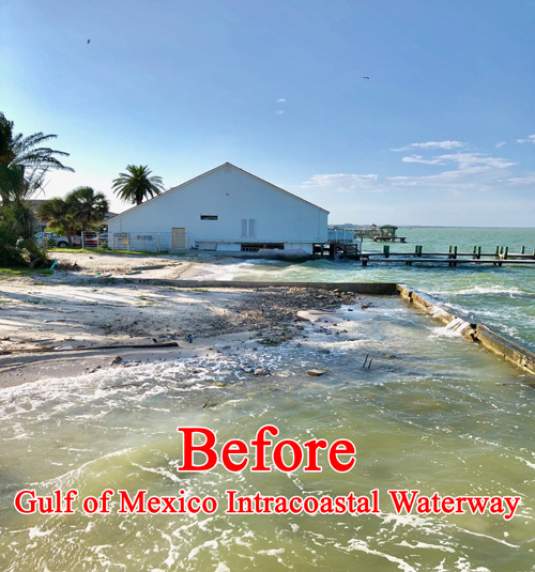
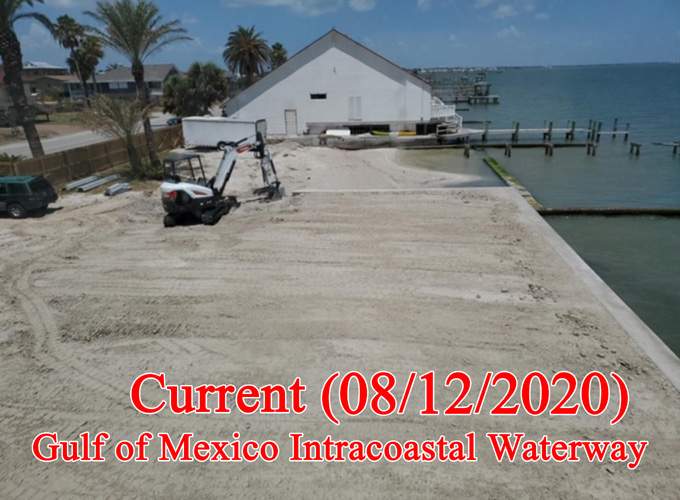
In August of 2019, the Sandsaver beach erosion barriers were installed in the Gulf of Mexico on a private property owners land. While the location is a Gulf of Mexico intracoastal waterway it is a low surf environment, where wave height in most instances is less than 6 inches in height. However, given the lack of tide, the large Sandsaver modules were installed into the Gulf of Mexico to remediate the owners coastal erosion issues and see if the beach can be renourished via a natural means. As demonstrated in the pictures above you can see that the modules are working extremely well in the low surf environment and possibly providing a permanent beach erosion solution.
SANDSAVER- HOW THE BEACH EROSION SOLUTION WORKS:
A CLOSER LOOK!
Watch the video above to learn how the Sandsaver™ beach erosion barrier works, renourishes and offers protection against beach erosion issues. The Sandsaver, is one of the only dredging alternatives that offers a long term solution, that is portable and modular, thus allowing it to be used in multiple locations or multiple times in the same location if so desired. Manufactured via the rotational molding process, the durable polyethylene contruction of the Sandsaver™ modules will offer beach erosion protection for generations to come.
SANDSAVER GALLERY
SANDSAVER JR. GALLERY
SANDSAVER PILOT US INSTALL PHOTOS
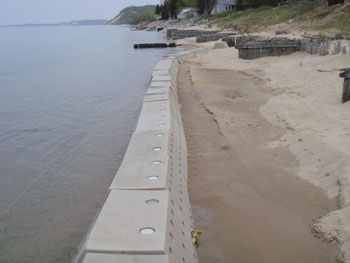
 |
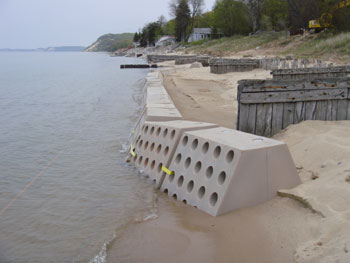 |
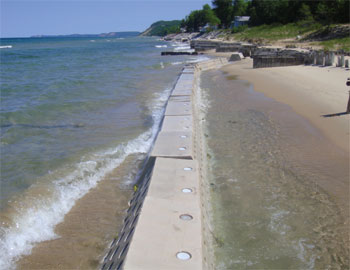 |
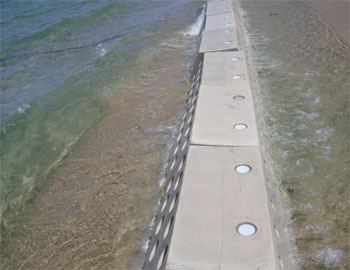 |
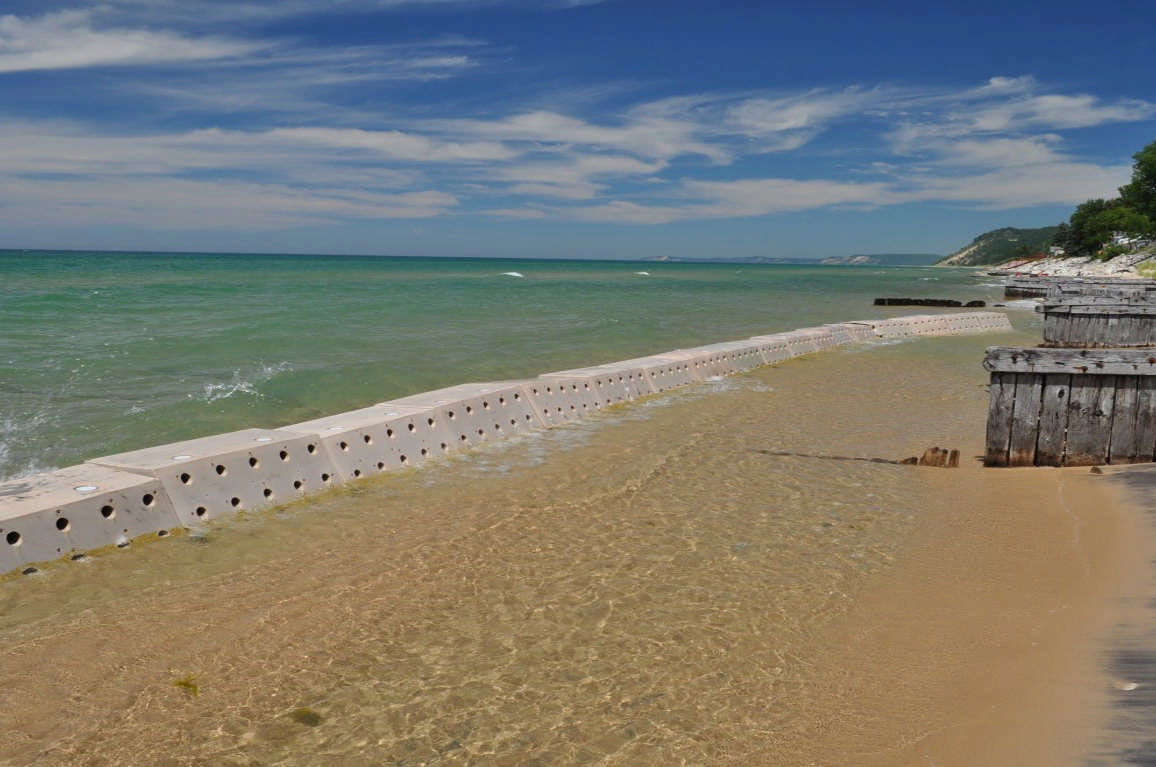 |
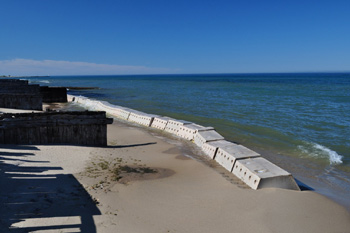 |
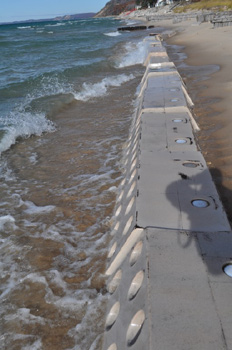 |
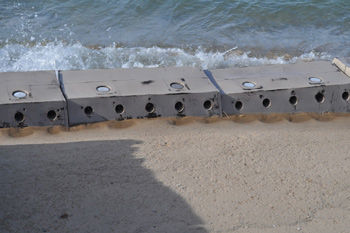 |
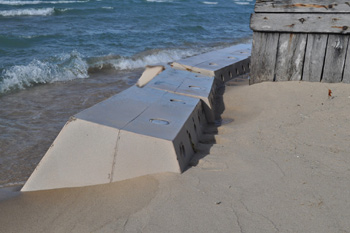 |
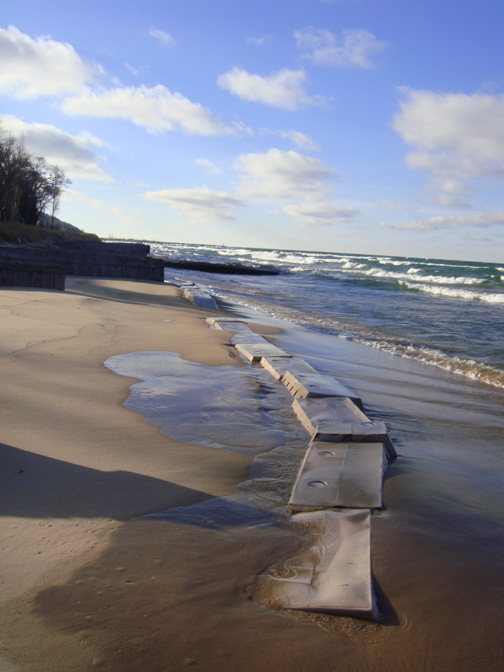 |
In the photos above, see how the large Sandsaver module protects a Lake Michigan beach, during a period of historically low water levels. While protecting the beach, the Sandsaver modules accreted nearly 10,000 cubic yards of sand. A Third Party survey and analysis was conducted of the installation location.
SANDSAVERS INSTALLED IN LAKE MICHIGAN
SANDSAVER LAKE MICHIGAN FINAL REPORT
Click the link below to download and read the final report of the pilot Sandsaver install in Lake Michigan. This report was conducted and performed by a 3rd party engineering firm.
With the reporting containing quotes such as:
“The results of the shoreline in response to the Sandsaver system are unambigulusly positive.”
Also discovered in the course of the research and study in Lake Michigan, the report states:
“at the very least, the Sandsaver design not generate adjacent negative impacts associated with shore-normal and impermeable structures. The Sandsaver modules permeability and placement in a shore-parallel orientation demonstrated no negative impacts to adjacent stretches of beaches. “
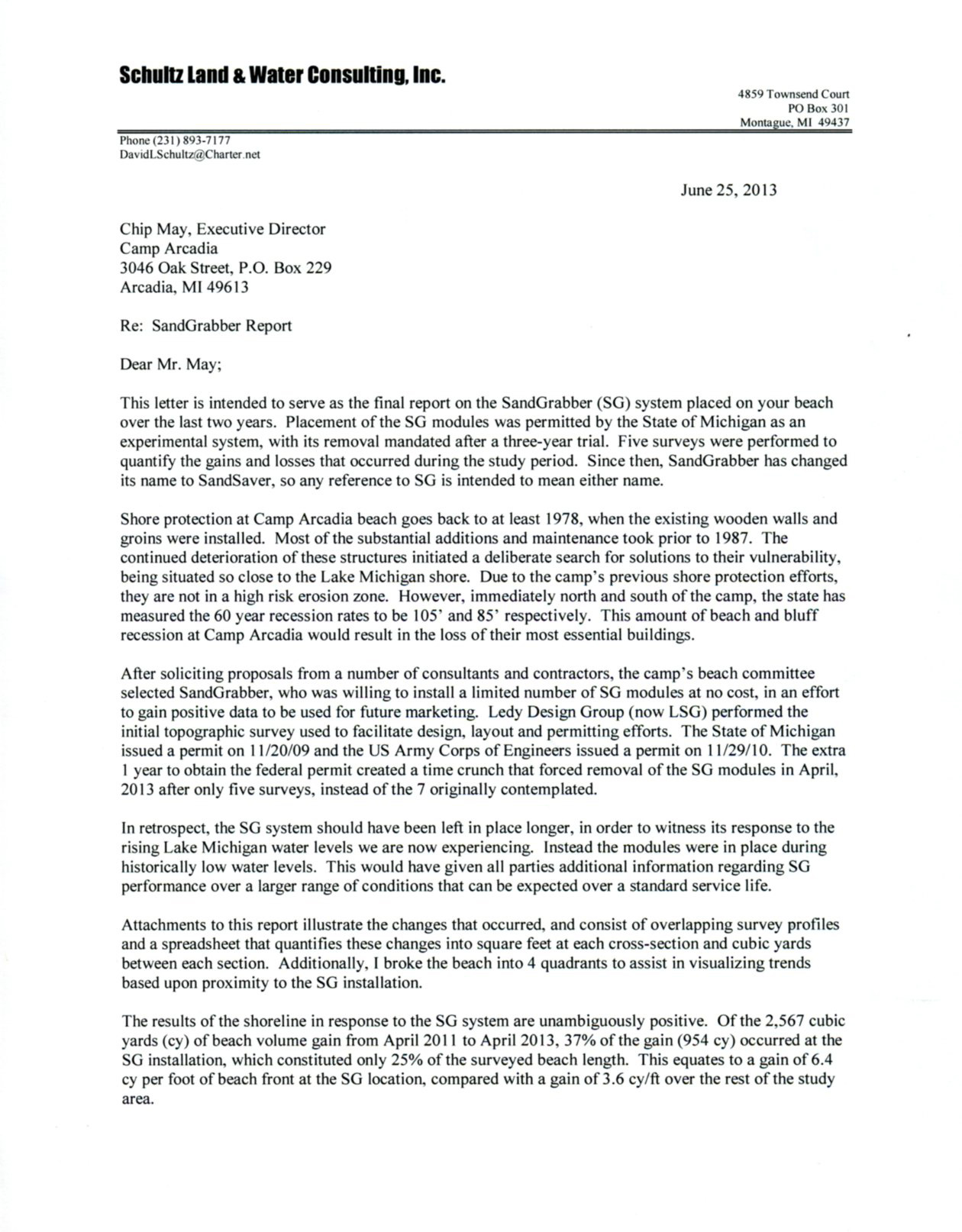
– Sandsaver- Lake Michigan Install (June 2013, PDF file)
SANDSAVER BEACH EROSION SOLUTION INFORMATION
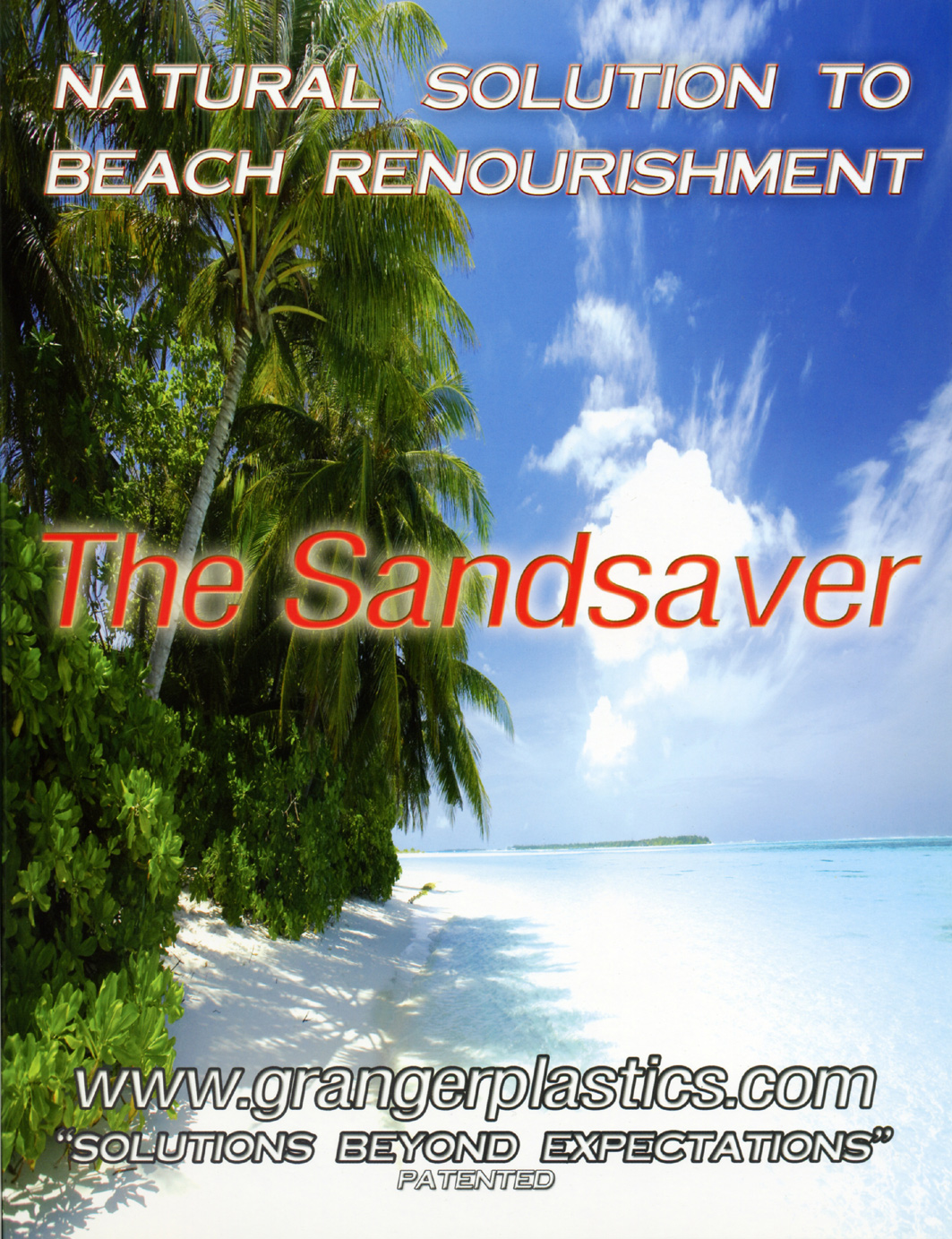
HISTORY OF SANDSAVER
In the 1970’s, an alternative to Beach Dredging, was proven in multiple parts of The United States. This technology, properly entitled “The Sandgrabber”, utilized a system of light weight blocks, that would allow the sand to settle on the beach side of the tide. The Sandgrabber showed promising results in both Coastal and Lake based applications, including installs in Hawaii, Ontario, Massachusetts and even Louisiana, as recent as 1995. As all innovations conceived by man, The Sandgrabber still required some advancements to solidify the technology for use by today’s current standards and regulations. Unfortunately, many less capable, less engineering minded companies, told the folks at Sandgrabber, their desires and wishes could not be achieved, this inability to provide an amicable solution to the sandgrabber issues continued for virtually 30 years.
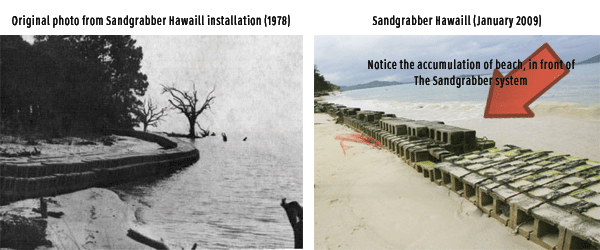
EVOLUTION OF SANDSAVER
The Sandsaver natural solution to beach erosion, is an innovative technology, that improves upon successfully utilized technology from previous decades that provided protection and renourishment in a number of locations ranging from the East Coast of the United States, Gulf of Mexico and in the Pacific Ocean. The most recently developed model of the Sandsaver, proved its ability in Lake Michigan, during a period of historically low water levels.
While a number of leading “Rotational Molding experts” stated their disbelief that a product with this innovative shape could ever be successfully molded, many stated repeatedly that this product could never be produced. The World-Leading Engineering at The Granger Plastics Company not only believed in their abilities to produce the module, Granger also proved it, by tooling up and producing high quality modules ready for use.
The 1970’s model of Sandgrabber, which was proven effective, had a couple of key drawbacks that kept many from utilizing the enormous cost saving and safe technique of beach re-nourishment:
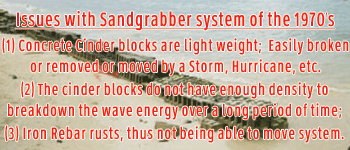
The Sandsaver, improved on all concerns raised by experts who had utilized or questioned The Sandgrabber system. The first issue, was the weight or density of the system when installed. The sandgrabber system, consisted of numerous, light weight, concrete cinder blocks. Even though, this proved to work in multiple locations and even still stands over 30 years later at an install location in Hawaii, the weight was viewed as a concern, due to any potential threatening storms, that could move, damage or shift the Sandgrabber installation location. The onset of storms actually increased the results seen by The Sandgrabber system, but due to the light weight blocks, the system was viewed as vulnerable. The Sandsaver directly removes any inclination of being too light, with each module weighing approximately 5,200 pounds, concerns of weight are a thing of the past. The Sandsaver utilizes USDA/FDA food grade materials, to encompass all surfaces of up to 5,000 pounds of material in each module.
The Sandsaver performs in 2 manners; First by breaking down the energy of the wave, thus reducing erosion on the beach. Secondly, it allows the wave, which contains large amounts of sand and beach sediment, to pass through the tapered holes and onto the beach surface. When the water retreats, it has to pass through the small portion of the module allowing the sand time to settle onto the beach and not back into the surf, thus building beach.
HOW DOES SANDSAVER COMPARE TO OTHER BEACH EROSION SOLUTIONS?
Dredging aka Beach Renourishment, Beach Dredging
Dredging or the more “politically accepted term” known as “Beach renourishment” has became some what of the “norm” in terms of solving the age old problem of Beach erosion. Dredging, involves the transport of the nourishment material (Sand & Sediment) from one area (usually further into the surf) then pumped to the affected area. This process is generally extremely expensive (minimum of $1 million/mile), depending upon the source. Dredging, unfortunately to this point is commonly used as a replenishment method. A poorly-designed or executed Dredging project can actually do more harm the impacted ecosystem, regardless of how much maintenance and expense is taken to deal with the sustainability of the littoral environment. Once a beach has been “renourished” it is almost standard, that it will always require regular Beach dredging/renourishment, since it has been proven that dredged or “renourished” beaches erode faster than natural beaches. The socio-economic activity that is generated from beach tourism may compensate for the cost of both capital and maintenance for dredging projects, but only in a small number of heavily urbanized or locations that see large Tourist revenues. Not only is the financial burdens of dredging severe, along with temporary, it also negatively affects the ecosystem of the waters and of the beach. Dredging causes direct mortality to many organisms and animals. Contingent upon the type of dredging equipment used, whether a Hopper Dredge, A cutter-head suction pipeline dredge, Grab Dredge or a Side-Cast Dredge, living organisms whether they are Sea Turtles, Fish, Fauna or others are all adversely affected or even killed. The more commonly used “Hopper Dredger” is well known to “take in” Sea Turtles via it’s suction pipes along the seafloor. I doubt that they use “take” in an animal sound/friendly sort of way.
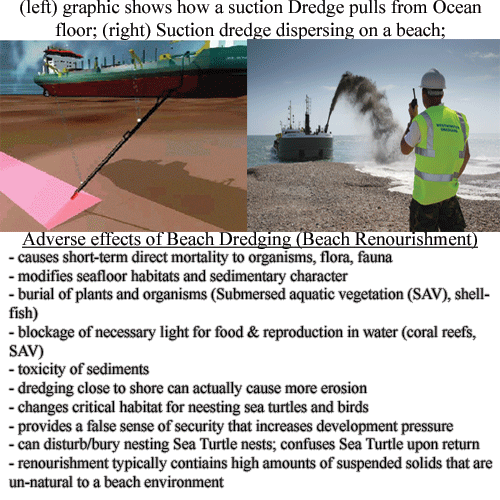 Recently, CBS News ran the following story, highlighting the enormous burden that is being placed on tax paying citizens, with the short lived results that are produced at such outlandish costs, only to be repeated in a short period of time.
Recently, CBS News ran the following story, highlighting the enormous burden that is being placed on tax paying citizens, with the short lived results that are produced at such outlandish costs, only to be repeated in a short period of time.
Groyne (Groin, United States)
A groyne (groin) is a rigid hydraulic structure built from an ocean shore (in coastal engineering) or from a bank (in rivers) that interrupts water flow and limits the movement of sediment that is moved or eroded away. In the ocean, groynes create beaches, or avoid having them washed away by longshore drift. In a river, groynes prevent erosion and ice-jamming, which in turn aids navigation. Ocean groynes run generally perpendicular to the shore, extending from the upper foreshore or beach into the water. All of a groyne may be under water, in which case it is a submerged groyne. The areas between groups of groynes are groyne fields. Groynes are generally made of wood, concrete, or rock piles, and placed in groups. Groynes are common and require little maintenance. They are often used in tandem with seawalls. Groynes, however, may cause a shoreline to be perceived as unnatural and ugly. Pictured below are examples of Groynes. The picture at the top shows 13 groynes on a beach in Portugal. The pictures below show 2 beaches, with numerous groynes installed.
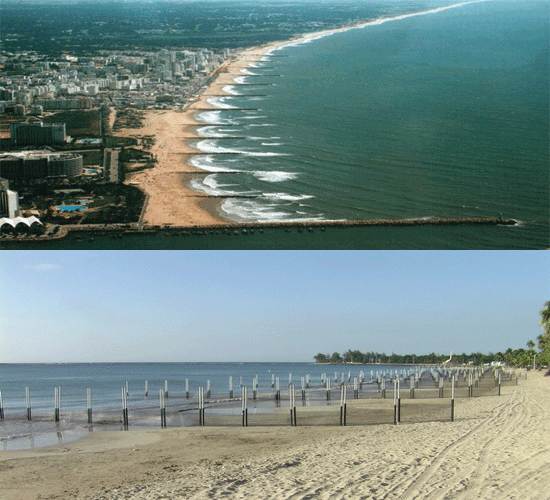 Basically the idea of a groyne is to prevent longshore drift. Groynes are generally cheap in comparison to dredging alternatives. The purpose of a groyne is to create and maintain a wide beach on its updrift side, primarily for recreation, but also for protection to the land behind. First, groynes act as a barrier to physically stop sediment transport (sand) in the direction of longshore transport through the system. This causes a build-up of the beach on the groyne’s updrift side. However, this is often accompanied by accelerated erosion of the downdrift beach, known as terminal groyne syndrome, as it occurs after the terminal groyne, which receives little or no sand via longshore transport. It is important to understand that groynes do not add any new sand to the beach, but merely retain some of the existing sand on the updrift side of the groin. If a groyne is correctly designed, then the amount of material it can hold will be limited, and excess sediment will be free to move on through the system. However, if a groyne is too large it may trap all the sediment reaching it and this can cause severe beach erosion problems on the down-drift side. As you can see from the pictures above, groynes are also very unsightly and generally de-tract tourists to that particular area of beach.
Basically the idea of a groyne is to prevent longshore drift. Groynes are generally cheap in comparison to dredging alternatives. The purpose of a groyne is to create and maintain a wide beach on its updrift side, primarily for recreation, but also for protection to the land behind. First, groynes act as a barrier to physically stop sediment transport (sand) in the direction of longshore transport through the system. This causes a build-up of the beach on the groyne’s updrift side. However, this is often accompanied by accelerated erosion of the downdrift beach, known as terminal groyne syndrome, as it occurs after the terminal groyne, which receives little or no sand via longshore transport. It is important to understand that groynes do not add any new sand to the beach, but merely retain some of the existing sand on the updrift side of the groin. If a groyne is correctly designed, then the amount of material it can hold will be limited, and excess sediment will be free to move on through the system. However, if a groyne is too large it may trap all the sediment reaching it and this can cause severe beach erosion problems on the down-drift side. As you can see from the pictures above, groynes are also very unsightly and generally de-tract tourists to that particular area of beach.
Groynes may be permeable, allowing the water to flow through at reduced velocities, or impermeable, blocking and deflecting the current. Permeable groynes are fabricated from piles, bamboo or timbers, whereas impermeable groynes (also called solid groynes or rock armour groynes) are constructed using rock, gravel, gabions, etc.
Groynes may be designed either as submerged or as non-submerged under normal conditions. Which of the two types will be used is dictated by the design conditions. Usually impermeable groynes are designed to be non-submerged, since flow over the top of solid groynes may cause severe erosion along the shanks. Submerged groynes, on the other hand, may be designed permeable, depending on the degree of flow disturbance that is needed.
Groynes may be classified as attracting, deflecting or repelling. Attracting groynes point downstream, they serve to attract the stream flow toward themselves and do not repel the flow toward the opposite bank. Deflecting groynes are generally short ones and used for local protection. They serve to change the direction of flow without repelling it. Repelling groynes point upstream. They serve to force the flow away from themselves. Groynes may be built with different plain view shapes. Examples are straight groynes, T head, L head, hockey stick, inverted hockey stick groynes, straight groynes with pier head, wing, or tail groynes.
Coastal Armoring
Coastal Armoring is a manmade structure that is designed to either prevent erosion of the upland property or protect eligible structures from the adverse effects of coastal tides and current action. Examples of Coastal Armoring include seawalls, revetments, bulkheads, retaining walls, sloped boulder revetments, sloped geo-textile revetments, geo-textile dune scour protection, or other similar structures.
Environmental impacts of coastal armoring are both site specific and cumulative. The effects vary depending on the type of structure that is being constructed for Beach protection. Also, the magnitude of the project, the specific geological, biological and oceanographic conditions in the vicinity of the coastal armoring structures. The impacts of an individual project need to be evaluated on a situational basis. Coastal armoring can potentially damage or alter local coastal habitats. They also deprive other areas of beaches sand, which leads to accelerated erosion of adjacent beaches. All types of Coastal armoring also hinder beach access and present potential issues with public and property safety.
As with any activity that alters a natural process, there can be significant long-term impacts related to coastal armoring. Currents, waves and wind normally transport sand and sediment throughout the littoral system. Coastal Armoring can interfere with littoral transport, which in a natural state may reach a dynamic equilibrium. When sand & sediment availability is reduced due to the existence of a coastal armoring structure, erosion can begin to increase in other nearby locations. This is due to the starvation of the materials that would normally supply these areas. When a coastal armoring structure is constructed and installed, a supply of sediment is also effectively being cut off. Armoring also causes deflection of the wave energy, thus accelerating erosion of nearby, unprotected sites, expanding the need for even more coastal armoring. In some cases, installing coastal armoring only begets more coastal armoring. Furthermore, armoring can result in the loss of beach and intertidal area through a process that has been termed “passive erosion”. Areas that undergo long-term net erosion experience a natural landward movement of the entire beach system during periods of sea level rise; Such has been the case for the last 18,000 years (approximately). As cliffs and sand dunes retreat, the vacated area becomes part of the beach environment and the position of the beach shifts landward. Building a protective structure in front of a cliff or dune will temporarily stabilize the seaward location of the cliff or dune edge, but regardless, the beach erosion continues. Since no new beach area is created through cliff or dune retreat, a net loss of beach actually occurs. Ultimately, as erosion continues, this process also will result in the loss of the intertidal zone, as waves impact the seawall at all times, low tide as well as high tide.
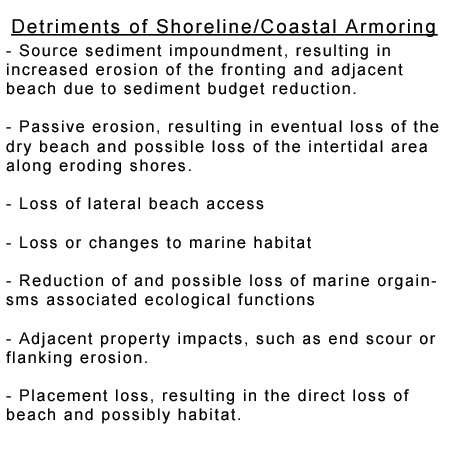
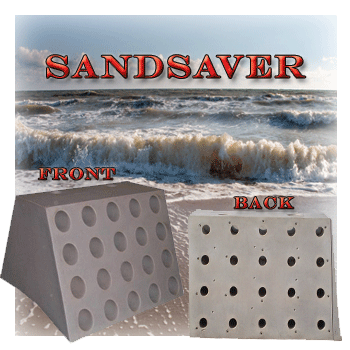
HOW TO STOP BEACH EROSION
The Sandsaver protected and re-built nearly 10,000 cubic yards of sand on a Lake Michigan beach, during a period of historically low water levels. Oceans and Gulfs typically have more wave energy and more sand in the system, thus allowing the system to provide more efficient and successful results in such applications.
TAKE ACTION & START SAVING YOUR FAVORITE BEACH TODAY!
Cost effective beach dredging alternative technology


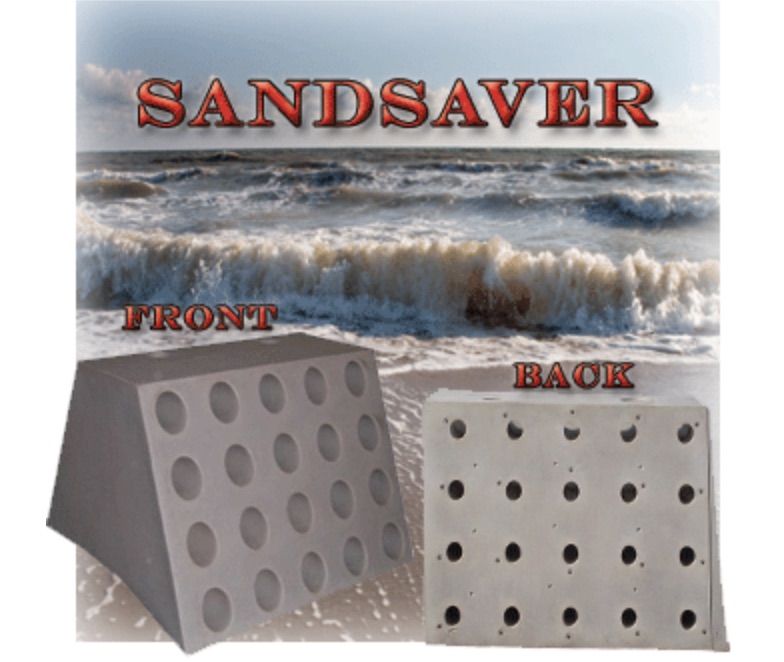
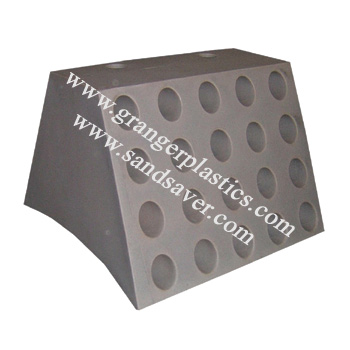
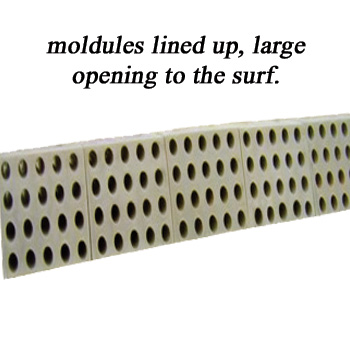
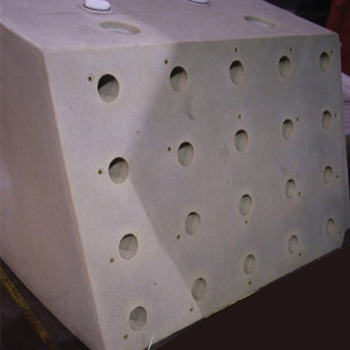
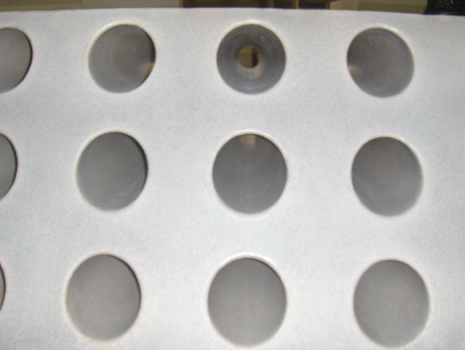
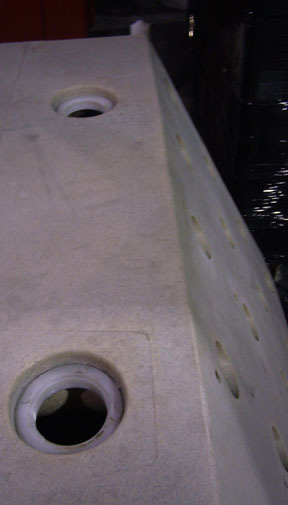
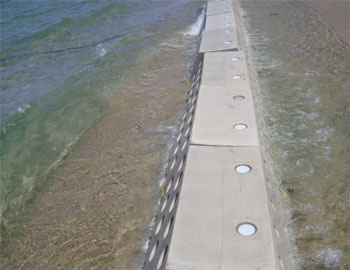
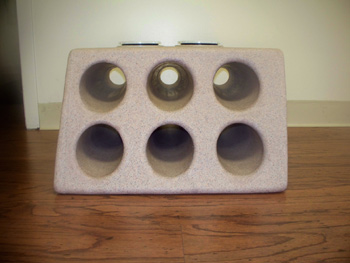
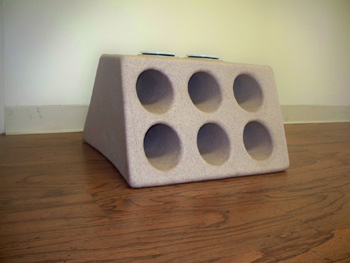
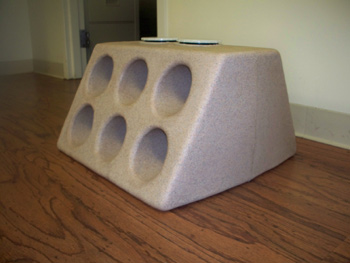
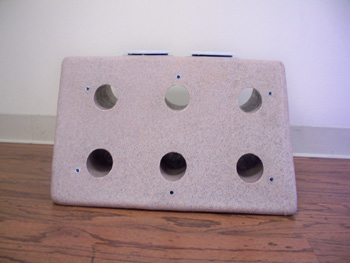
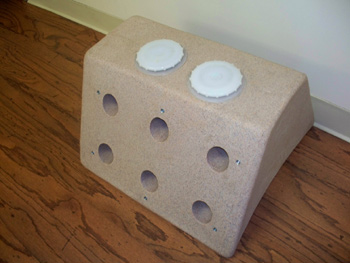
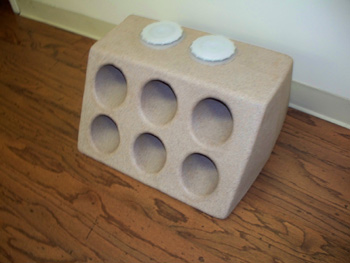
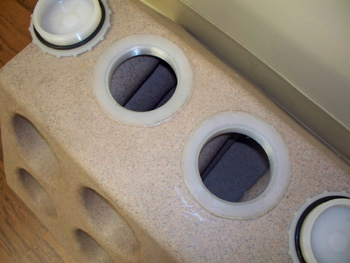
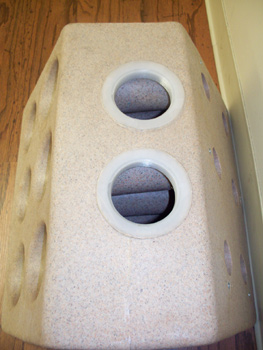

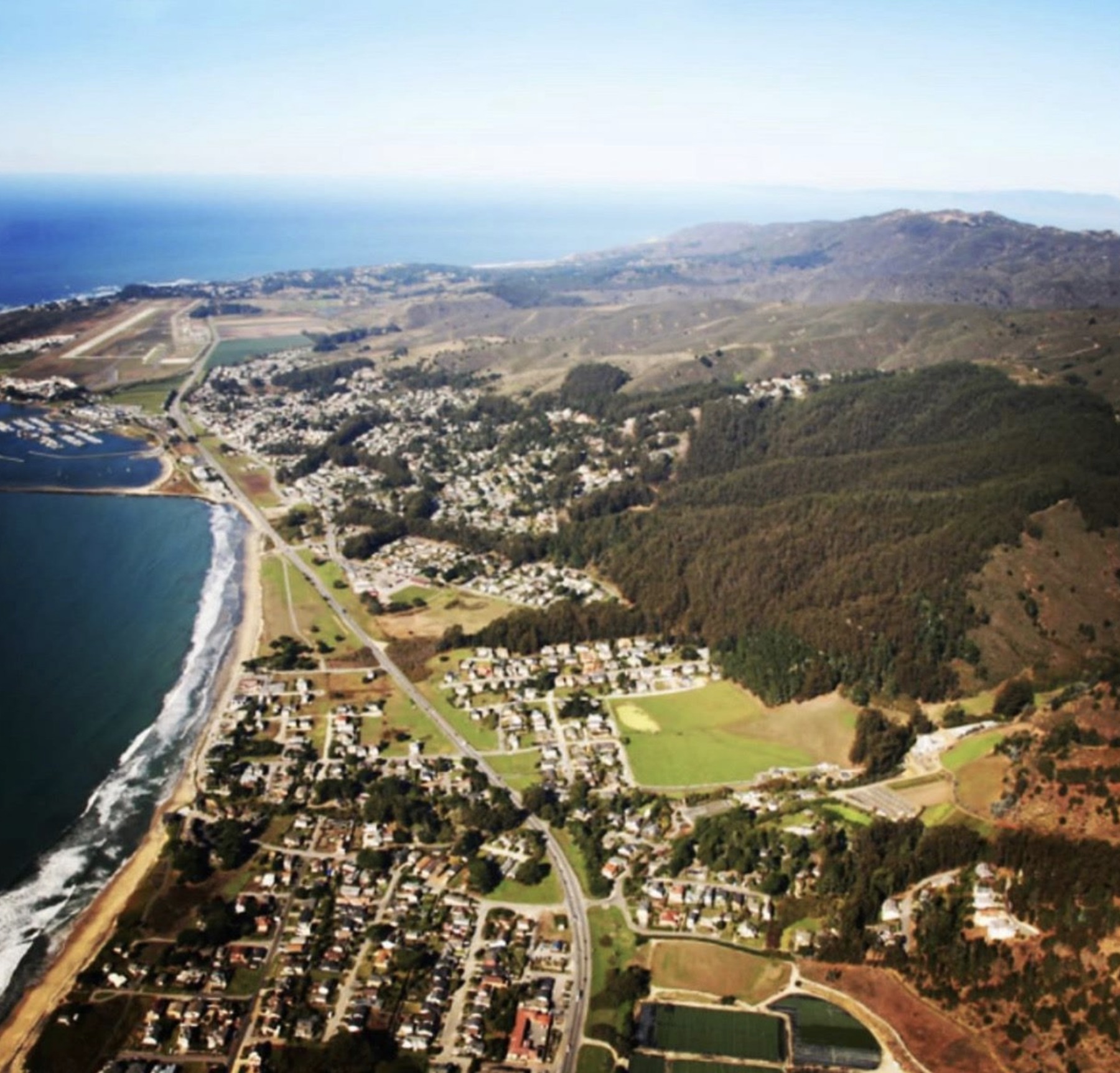

Wow. What a great solution! How do we get something like this to happen?